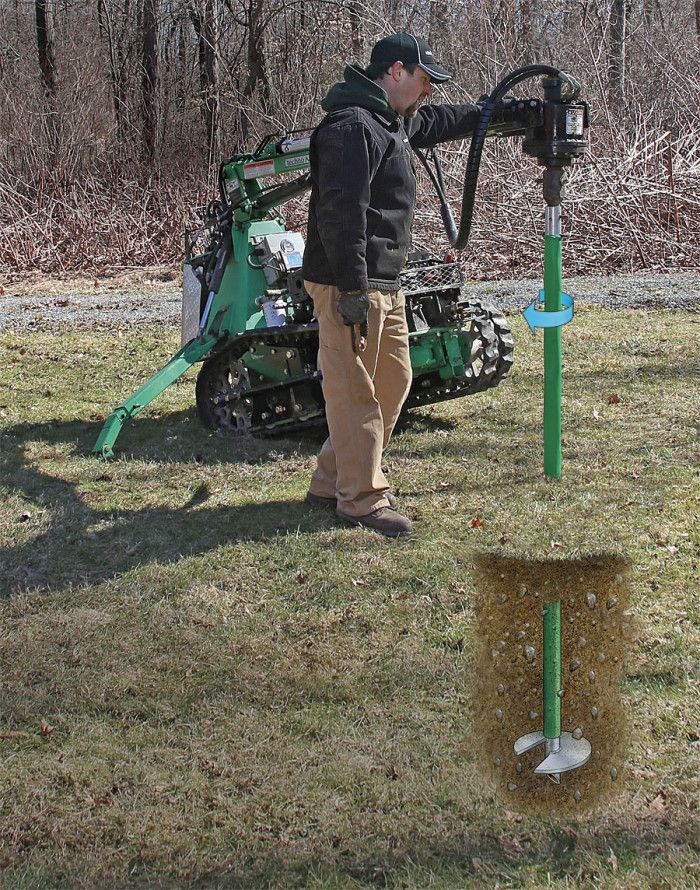It’s Time To Consider Helical Pile Footings
These threaded steel piers make new projects easier to get out of the ground, including new decks, sheds, and even houses.

Synopsis: Helical piles—also called helical piers—are steel footings that screw into the ground. Author Jeremy Hess installs them to support structures such as decks, porches, and boardwalks; to shore up failing house footings; and to underpin settling concrete slabs. Here, he discusses the parts of a helical pile, how to install one, and how to attach it to a structure.
After almost 20 years in construction, I became a dealer for Techno Metal Post (TMP), a helical-pile manufacturer. Helical piles can be driven almost anywhere, install in minutes, don’t make a mess, and come in sizes that can support an enormous variety of structures. Since becoming a dealer, I’ve installed piles to support decks, porches, boardwalks across wetlands, industrial equipment, and business signs; to shore up failing house footings; and to underpin concrete slabs that were settling. Some of the machines used to drive the piles are small enough that they can be used inside a house — for example, to add a footing to a basement. It is not uncommon for my helper and me to pull up to a job site first thing in the morning, install 10 or 12 piles for a large deck, and leave by midafternoon with no evidence of our having been there besides the piles themselves.
Helical piles are essentially large steel screws that thread into the ground to serve as footings, and they have been in use since the early 1830s. The machines used to drive the modern versions come in many sizes, from the walk-behind machine I use to versions that are mounted on excavators. All of them work pretty much the same way. A gas or diesel engine drives a hydraulic pump that provides the power to spin the pile into the ground.
The first project I ever did — a 30-ft. by 80-ft. deck for a winery — exemplifies some advantages of helical piles. The original design called for concrete footings. However, because the deck was to be built over uncompacted fill, those footings needed to be 14 ft. deep to reach bearing soil. The owner almost abandoned the project after finding that concrete footings would cost $20,000. I was able to save him $8000 with helical piles. And even on the steep slope of that site, the installation took a couple of days instead of a week.
When you account for all the costs of conventional footings, helical piles are surprisingly affordable. Consider these costs: renting an auger or hiring an excavator, or the time it takes to dig by hand; removing spoils from the excavation; and repairing site damage from heavy equipment. If the concrete will come from a truck, how will it be moved to the hole? How do you know that the soil will support the structure? What if it rains between the time of the excavation and the footing inspection so that the hole has 6 in. of water in the bottom? Helical piles overcome all of these concerns. Although pricing for piles can vary widely based on availability, contractor, and location, my company can install four piles for a typical residential deck for $600 to $900.
While there are other helical-pile installers, most don’t focus on residential work like TMP does. That said, you may have a local contractor who does residential work using other manufacturer’s products. Many of the advantages I discuss here are common among manufacturers.
For more photos and details, click the View PDF button below:





